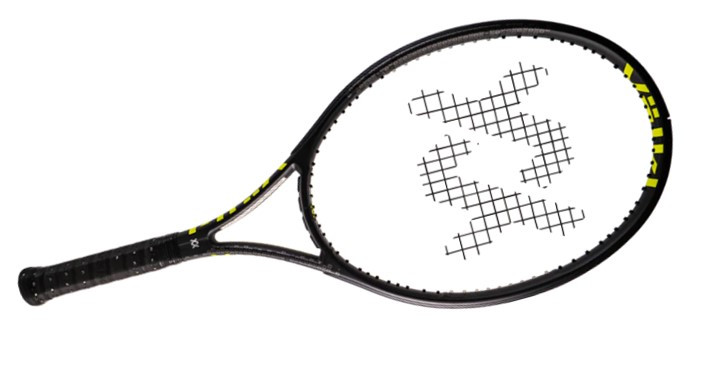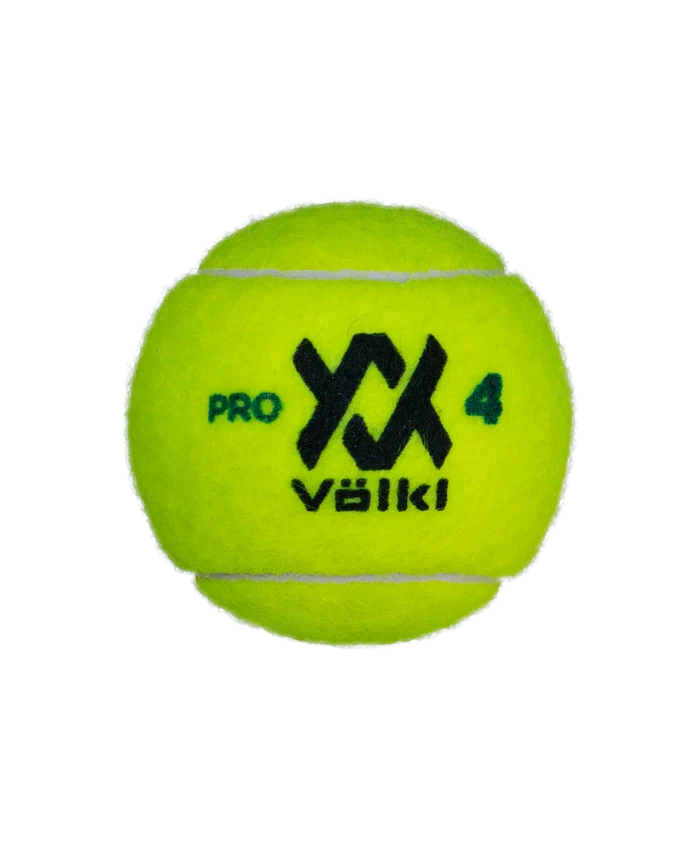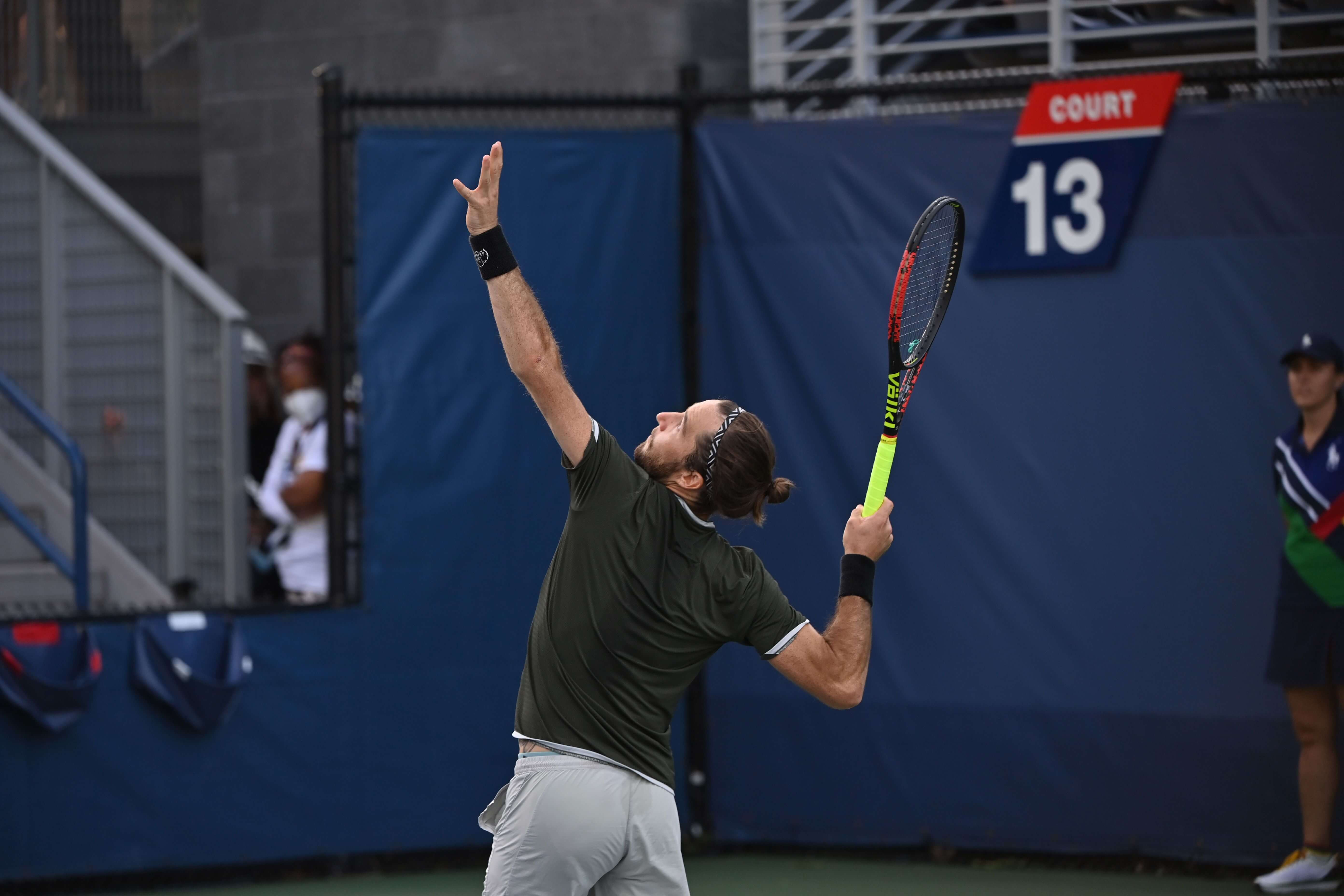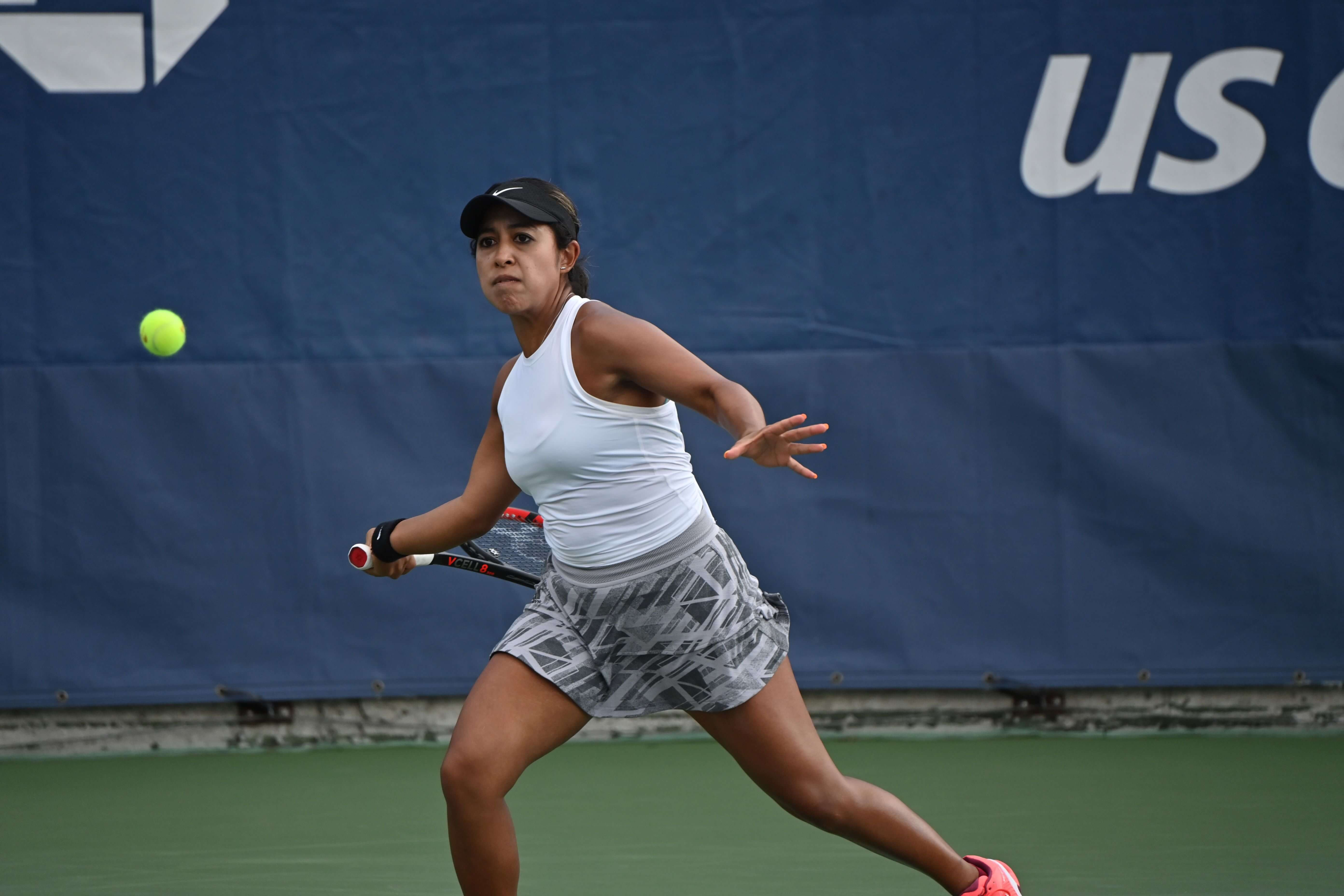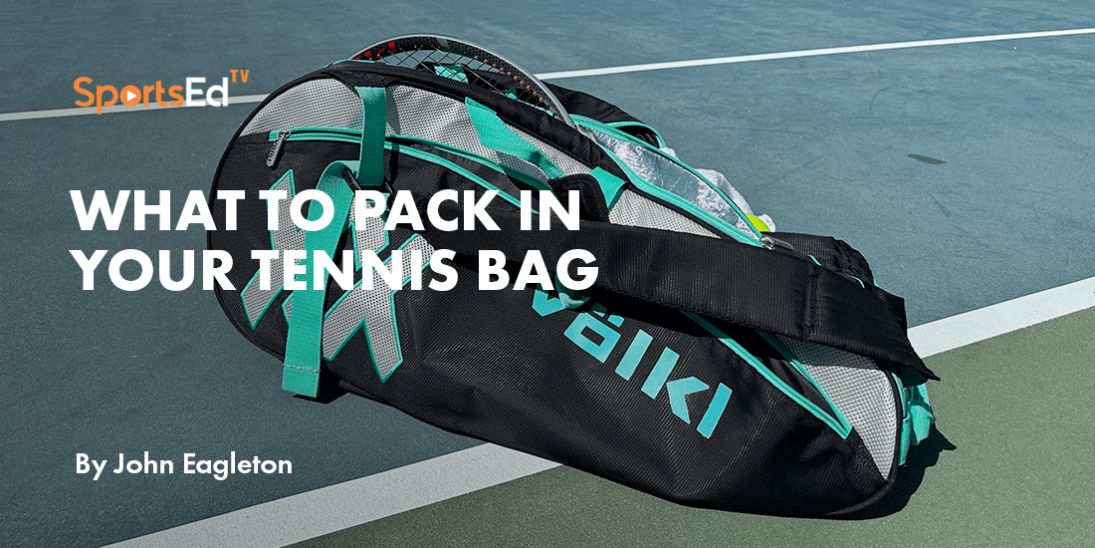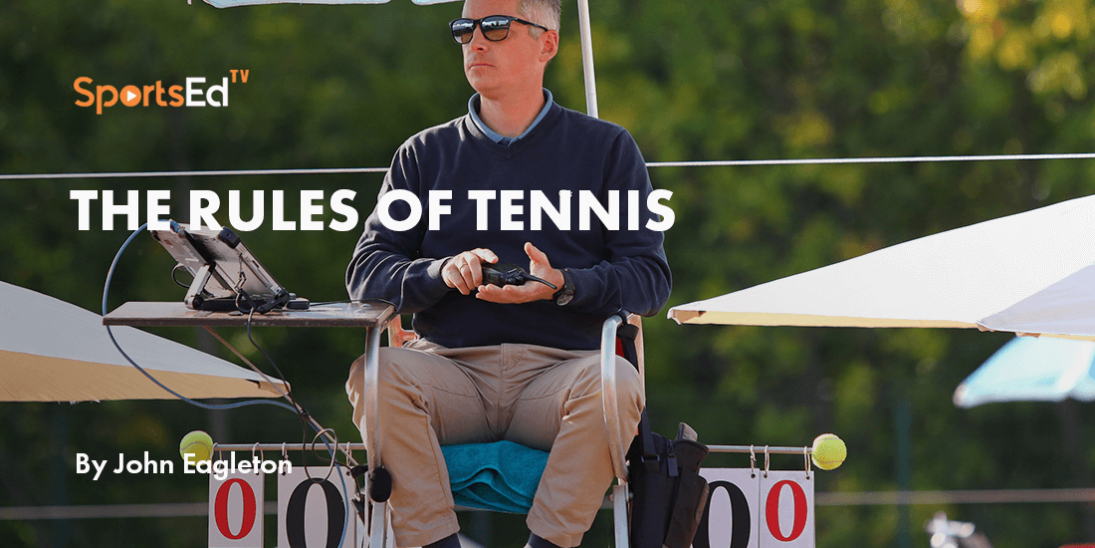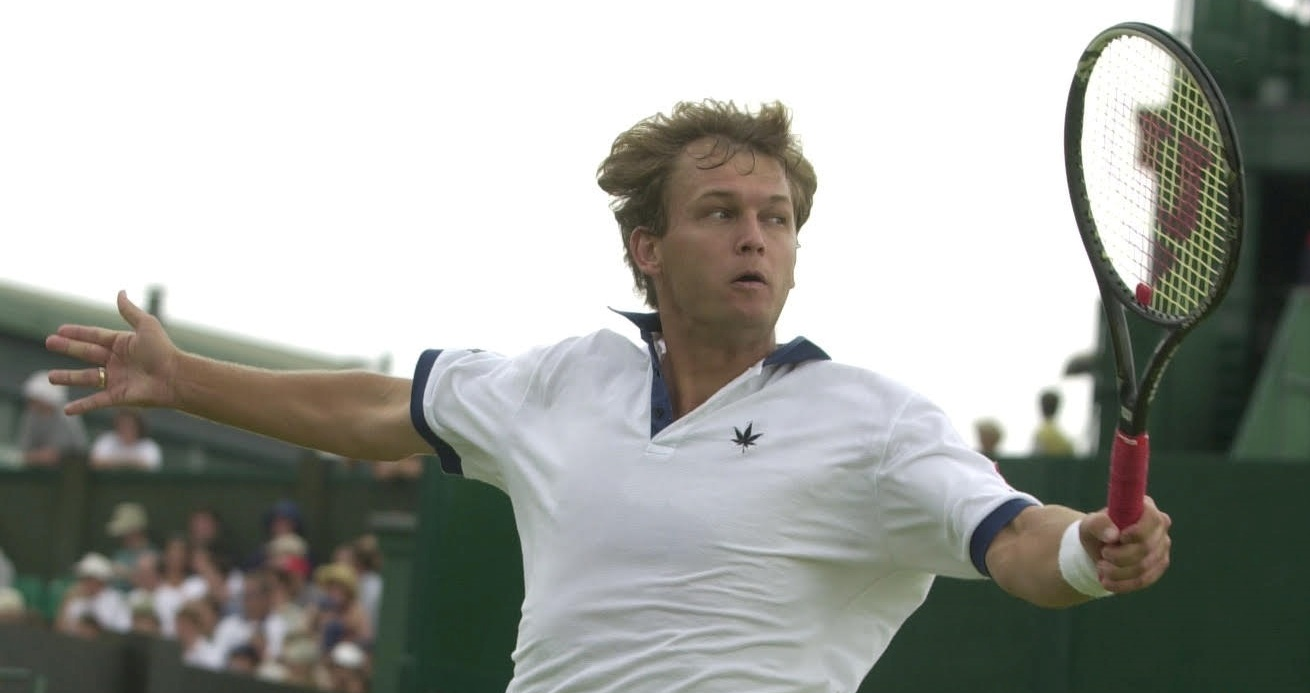Tennis
Welcome and thanks for visiting...

How to Play Tennis
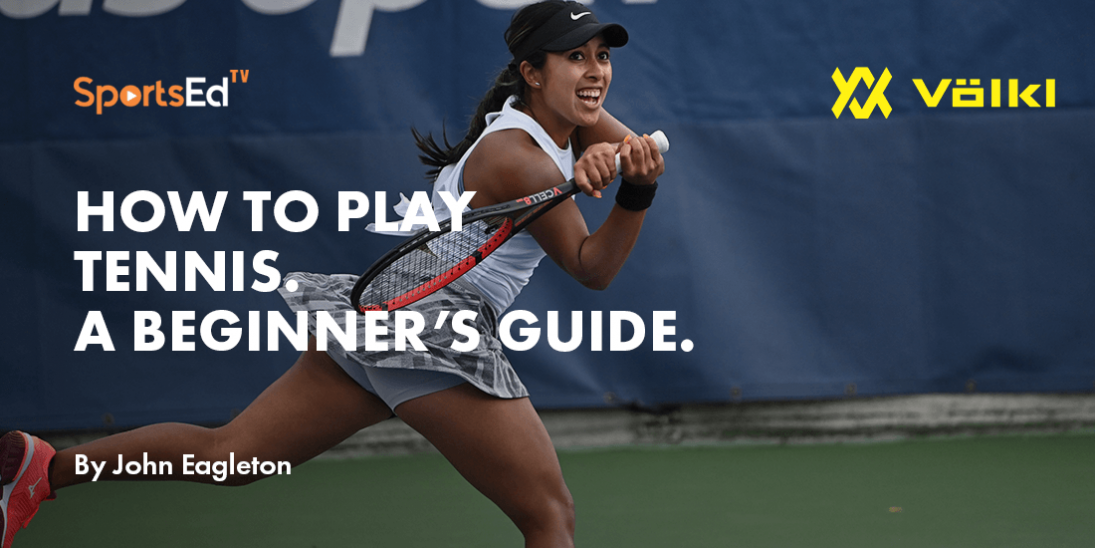
Tennis is a fun and engaging sport that can be enjoyed by people of all ages and skill levels. Whether you're a complete beginner or an experienced player, there's always room to improve your technique and learn new strategies. If you're new to tennis and want to learn the basics, you've come to the right place. In this guide, we'll cover everything you need to know to get started, from the equipment you'll need to the basic rules of the game. By the end, you'll have a solid understanding of the fundamentals of tennis and be ready to hit the court with confidence. So, get ready to grab your racquet, and let's get started!
The important thing to remember is that tennis is not as difficult as it seems and that you can (and will) learn how to play quickly. So don’t get discouraged and stick through with it, and most importantly – have fun!
Tennis Equipment – The Basics
Playing tennis doesn't have to be complicated, and having the right equipment can make all the difference. Below, we'll cover the essential equipment you need to get started, including racquets, balls, shoes, hydration, overgrip, and clothing. With the right equipment in hand, you can improve your game and enjoy the sport of tennis with confidence.
Tennis Racquet
A tennis racquet is an oval-shaped piece of equipment that is used to hit the tennis ball during a match. The head of the racquet is strung with a network of strings, which creates a surface area for the ball to bounce off of. The frame of the racquet is typically made of lightweight materials such as graphite or graphite composites and has a handle that the player grips while playing. Tennis racquets come in a variety of sizes and weights, and players often choose one based on their personal preferences and playing style.
Choosing the right tennis racquet can be a complicated process. With so many different models and brands available, each serving different needs and preferences, it's important not to be hasty in your decision-making. We recommend demoing several racquets before making one of the biggest tennis decisions. Importantly, a player's body type, ability to swing, and level of dedication will all affect a beginner's choice of racket. Other factors, such as strength and eye-hand coordination, also play a big role in the selection process. A common issue for beginners is choosing a racket that is either too light or too heavy, which can result in unnecessary spending down the road. It's also important to consider the size, weight, and string of the racket. For more detailed information on how to choose the right tennis racket, check out our article on the topic.
Tennis Balls
Just as a tennis racquet is essential for playing the sport, tennis balls are equally important. Without them, you simply can't play tennis. Therefore, choosing the right type of tennis ball is just as important as selecting the right racquet. When considering which tennis balls to use, it's important to take into account factors such as durability, bounce, and compatibility with the playing surface. We recommend using high-quality tennis balls that maintain consistent bounce characteristics, as they'll be more durable and allow for better gameplay. It's important to note that tennis balls lose their bounce over time, so it's essential to replace them regularly to ensure a consistent and enjoyable game. When choosing new tennis balls, consider the level of play and match environment, as some balls are better suited for specific surfaces and conditions.
Tennis shoes
Tennis shoes are specifically designed for playing tennis and are crucial for preventing injury and optimizing performance on the court. They provide the support and stability you need to move quickly and make sudden stops and turns, reducing the risk of slips and falls. When choosing tennis shoes, it's important to look for models with good arch support, ample cushioning, and a durable outsole. It's also essential to keep in mind that different surfaces may require different types of soles, such as non-marking soles for clay courts and abrasion-resistant soles for hard courts. Choosing tennis shoes that fit properly is equally important, as ill-fitting shoes can cause blisters and other foot injuries that can sideline you from the game.
Overgrips and dampeners
Overgrips and dampeners are small but crucial items to include in your tennis bag. Overgrips provide extra cushioning and absorb sweat, improving your grip on the racquet. Dampeners reduce the vibration of the strings, making the racquet more comfortable to use. Bringing extra overgrips and dampeners can ensure that you never run out during a match. When applying overgrips, make sure to overlap them evenly and smoothly to avoid slipping and bunching.
Tennis Clothing
When it comes to clothing, comfortable and breathable athletic wear is essential for playing tennis. Look for clothes made from moisture-wicking materials that will keep you cool and dry during your match, especially on hot and humid days. Choosing clothing that fits well is equally important, as clothes that are too tight or restrictive can impede your movement and affect your game. It's also crucial to consider the fit of your clothing and choose items that allow for a full range of motion. Opt for clothing that is designed specifically for tennis, as these items are often made with performance-enhancing features such as ventilation, stretchy materials, and sweat-wicking fabrics. By choosing the right clothing, you'll be able to move freely and stay comfortable during your match, allowing you to play your best game.
it's also a good idea to wear a wristband to stop sweat from interfering with your grip on the racquet. Tennis can be a high-intensity sport, and it's common to experience sweat on your hands during a match. A wristband can help absorb this moisture and keep your hands dry, reducing the risk of slippage and improving your grip. Look for wristbands made from moisture-wicking materials that will keep you cool and dry and choose a size that fits snugly around your wrist without being too tight or restrictive. By wearing a wristband, you'll be able to focus on your game and avoid distractions caused by sweat.
Water bottle and electrolyte tablets
Staying hydrated is crucial for peak performance on the court. In addition to a water bottle, you can bring electrolyte tablets to replenish lost minerals such as sodium, potassium, magnesium, and calcium. Products like Waterdrop can come in various flavors and formulas designed for different levels of exertion. These tablets are made with clean ingredients and no sugar, making them a healthy option.
As you start to get more involved in the game of tennis, you may find that you need to complement your arsenal with other pieces of equipment to improve your game and stay prepared on the court. In addition to the essential equipment we've covered, such as racquets, balls, shoes, hydration, overgrip, and clothing, you may want to consider packing additional items in your tennis bag. For example, you might want to pack extra grips and strings in case your racquet needs some last-minute maintenance, or a towel to wipe off sweat during breaks in play. It's also a good idea to have sunscreen and a hat to protect yourself from the sun's harmful rays, as well as a first aid kit in case of injuries. To learn more about what to pack in your tennis bag, check out our article on the topic. By staying prepared and well-equipped, you'll be able to focus on your game and enjoy the sport of tennis to the fullest.
The Tennis Court
A tennis court is a rectangular playing surface with a length of 78 feet and a width of 27 feet for singles matches or 36 feet for doubles matches. The court is divided by a net that is 3 feet tall at the center and 3.5 feet tall at the posts. The playing surface is made of a variety of materials including clay, grass, or hard court. The court is surrounded by lines that denote the boundaries of the playing area and include the service line, baseline, and sidelines. There are also markings for the service boxes, which are the areas where the serve must land for it to be considered in play.
.jpg)
Tennis Court Lines
The tennis court is defined by several lines, each with a specific purpose. The baseline indicates the back boundary line of the tennis court, which runs parallel to the net and is used to mark the length of the court. A player must stand behind the baseline when serving, and if a shot lands past the baseline, it's considered out. The doubles line indicates the boundary of the court widthwise during a doubles match, and the singles line serves the same purpose for singles matches. Any shot that bounces outside these lines is considered out, resulting in the player losing a point. The center service line divides the court into a left and right half, and it's only relevant during a player's serve. The service line indicates the lengthwise limit of the area where a player's serve must land. A player must land their serve within the boundaries of the service line, or it's considered a fault. The sideline is another important line on the tennis court that defines the side boundaries of the court. Shots that land outside the sideline are considered out, resulting in the player losing the point. The center mark is a line on the tennis court that indicates where the server must stand before serving. This line divides the court into two halves, and the server must start serving from the right side of the center mark. After the first point, the server will alternate between serving from the left and right sides of the center mark. By following this rule, players can ensure that the serve is fair and that each player has an equal chance to win the point.
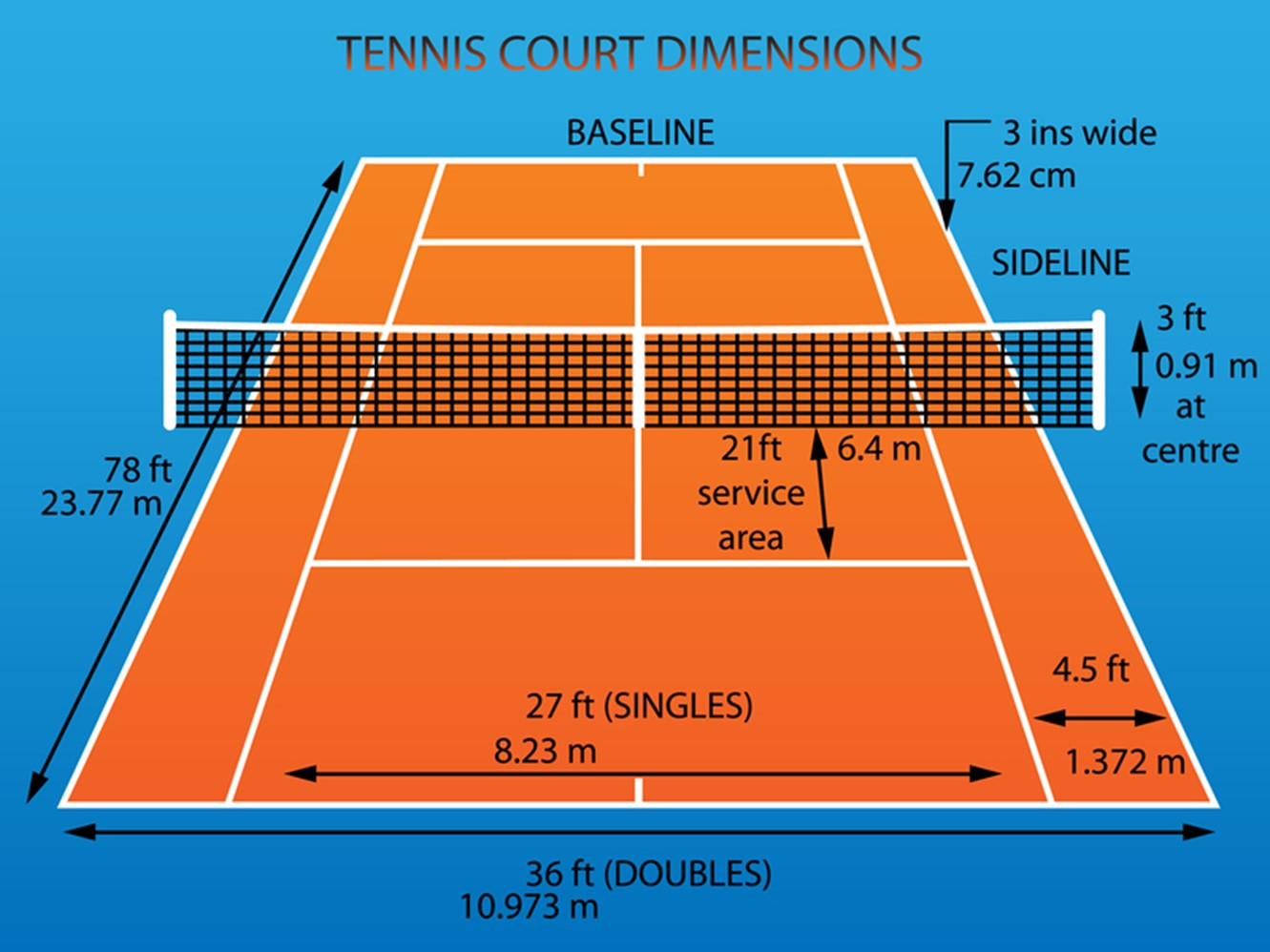
Tennis Court Areas:
When the lines above are combined, they form different areas on the tennis court. The left and right service areas are the most important areas to understand. These are the areas where players need to hit their serves, and they alternate between the two boxes after each point. During a serve, a player must hit the ball into one of the two service boxes, depending on the side of the court they are serving from. The doubles alley is only relevant during doubles matches, and it's an extension of the singles court to accommodate the four players on the court. The left and right alleys are located between the single and double lines and the court's sidelines, respectively. In a doubles match, players are allowed to hit the ball into the doubles alley during play.
The net is a crucial component of a tennis court, as it divides the court into two halves and serves as a barrier between the players. The net is suspended at a height of 3 feet (0.914 meters) at the center and 3.5 feet (1.07 meters) at the posts, and it must be 42 feet (12.8 meters) wide for doubles matches and 27 feet (8.23 meters) wide for singles matches. The net is designed to allow the ball to pass over it during play, but it also serves as an obstacle that players must aim their shots over or around.
By understanding the layout of the tennis court, players can start learning the rules and how to hit specific shots with more confidence. It's important to note that different surfaces may affect how the ball bounces and how players move on the court, so players should take the time to understand and adapt to these differences as they continue to play.
Tennis Shots
Tennis is a sport that requires a diverse range of shots to be successful. From powerful serves to delicate drop shots, the game offers a variety of ways to hit the ball. Different shots are used for different situations during a match, and mastering each one is crucial for any tennis player looking to improve their game. Whether you're a beginner or an experienced player, understanding the basics of each shot and when to use them can make a significant difference in your overall performance on the court. Let’s explore the main different types of tennis shots and their purposes. For each main shot, you will find a link to instructional tennis videos.
The tennis serve
The serve is one of the most important shots in tennis, as it is used to begin every point. The main goal of a serve is to hit the ball into a specific area on the opposite side of the net, known as the service box. There are two service boxes located on the deuce and ad courts. The server alternates between hitting into each box during a game. To execute a serve effectively, there are seven steps to follow, including getting into a good stance, selecting a target, using the right grip, tossing the ball high in the air, striking the ball, and finishing the swing. In tennis, players get two chances to make the serve per point, with the number of serves dictated by the number of points played in the game. When a returner cannot make contact with the ball, it is called an ace, and the server wins the point automatically. Ivo Karlovic, a Croatian player who is six feet, eleven inches tall, is widely considered to have the best serve in the history of the sport, having hit the most aces. See our library on how to serve in tennis.
The return of serve
When playing tennis, returning a serve is a crucial skill to have. The return of serve is the shot made by the player who is not serving to start a point. While serving is considered to be an advantage in a point, great returners such as Andre Agassi and Novak Djokovic have been highly effective at breaking serve in their careers. When returning a slice serve, the key is to detect the spin early and start moving toward the ball before it bounces. The returner should also keep the ball away from the net player and low to the feet of the server in doubles tennis or hit a deep crosscourt shot if the server is staying back at the baseline. A deep lob over the net player can also be an effective return shot. Visit our full video library on the serve return.
The Forehand
The forehand shot is one of the fundamental strokes in tennis and is a key component in any player's arsenal. It is a shot hit on the side of the body of the hand in which you hold the racquet and is usually the first stroke that players learn when they start playing tennis. The forehand is a versatile shot that can be hit with topspin, slice, or flat, and is used for both offensive and defensive play. With the right technique and practice, players can develop a strong and consistent forehand that can be a weapon on the court. Learn the forehand by clicking here.
The Backhand
The backhand shot is executed from the non-dominant side of the body by bringing the racquet across the body and swinging it away in the desired direction. It is generally considered a more challenging shot to master compared to the forehand. The backhand can be performed with one or both hands. Until the 1930s, players used a single-handed backhand with an eastern or continental grip. Vivian McGrath and John Bromwich, two Australian players, were the first notable players to adopt the two-handed backhand. Since then, it has become more common because it provides easy access to power and control. Players like Serena Williams, Venus Williams, Maria Sharapova, and Andre Agassi have used the two-handed backhand to great success, winning many grand slams. The two-handed backhand generates more power than a single-handed backhand, giving the player an advantage on power-focused shots. Learn the tennis backhand.

The Slice
A slice shot is a type of backhand stroke that involves swinging the racquet through the bottom of the ball instead of the top. This imparts underspin on the ball, causing it to bounce low and stay close to the ground after it crosses the net.
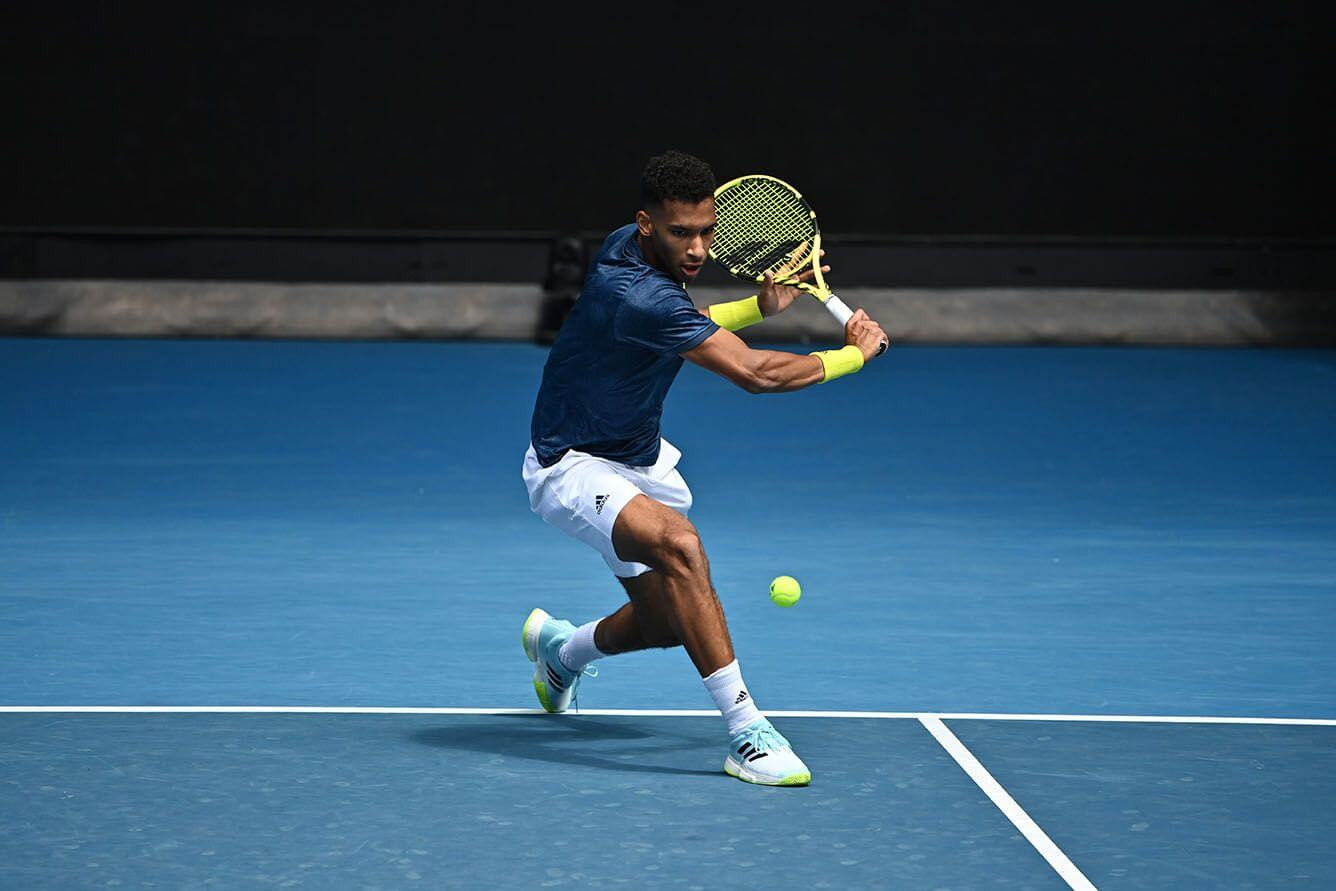
The Volley
A volley in tennis is a shot hit before the ball bounces on the court. This shot can be executed anywhere on the court but is typically made between the service line and the net. When hitting a volley, it is essential to use a short backswing with the racquet face at no more than a 45-degree angle. The momentum should be forward through the ball's contact, but there should be no full follow-through or swing of the racquet. This shot is hit with an abbreviated "punching" stroke. It is not legal to volley the serve return since the serve must bounce before it is returned. On the other hand, a half-volley is a shot hit immediately after the ball has bounced. Some players, like Maria Sharapova, use their non-dominant hands to play defense while on the run, and it is legal to switch hands in tennis. Watch our videos on how to volley in tennis.
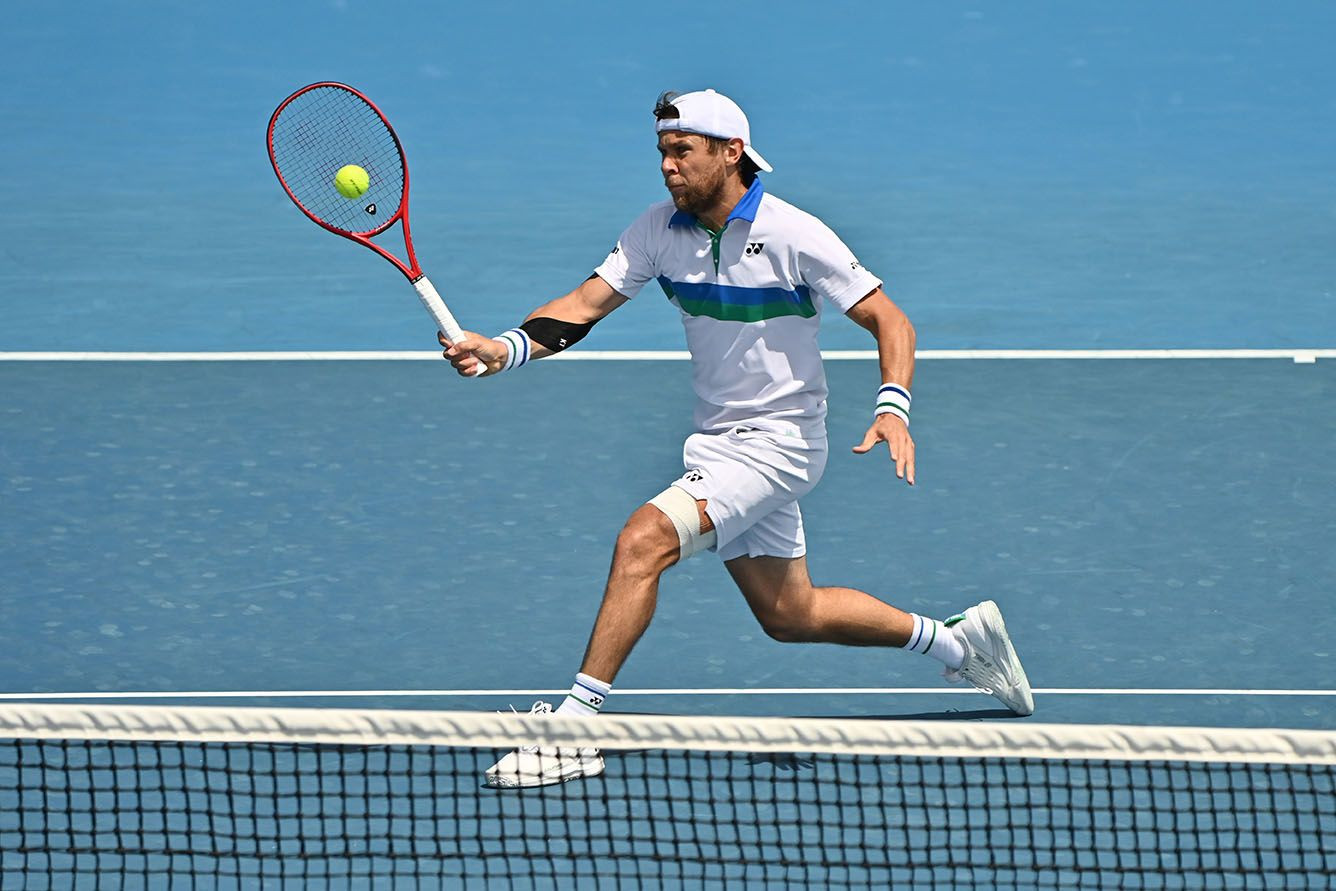
The Lob and The Overhead
A lob is a versatile tennis shot that can be used both on defense and offense. It is a high-lofted shot that travels deep toward the opposing player’s baseline. When used defensively, the lob can push an attacking player away from the net position, buying the defensive player time to recover their position on the court. On offense, the lob can be used to get the ball past the net player to win the point. To hit an effective lob, use a long, low-to-high stroke with a slight backspin or slice for control. An overhead smash is an ideal response to a lob, as it allows a player to reach up and hit the ball high in the air before or after it has bounced. The technique used to hit an overhead is similar to that of the serve, and a well-executed overhead is usually a point-ending shot. Watch our videos on the overhead.
Basic Tennis Rules
If you're new to tennis, the rules might seem complex at first. To help you get started, we recommend checking out our article The Rules of Tennis. There, you'll find detailed explanations for every rule you need to know. For this article, we'll provide a brief overview to help you understand the basics of playing tennis. The first thing you need to know is how to play a tennis point. Once you grasp this concept, you can move on to learning the scoring system. To start a match, the players must decide who serves first by flipping a coin. The winner of the toss gets to choose to serve or receive. The player serving is called the server, and the other player is the receiver. Once this is decided, the first point is played, and the game is underway.
When starting a tennis point, the serving player must stand behind the baseline on their side of the court. During the first point, the server will begin on the right side of the center mark, and then alternate sides after each point. To begin the point, the server must hit their serve within the service box diagonally across the net. For example, if the server is standing on the right side of the court, they must hit their serve into the right service box on the other side of the net. Players have two opportunities to hit their serve on each point, and if they miss both attempts, it results in a double fault, and they lose the point. Once the serve is successful, the point begins, and players must hit the ball over the net and inside the court until someone wins the point. Players may hit the ball directly in the air or let it bounce once on their side of the court after it bounces on the service box. At this point, they may hit any of the shots mentioned earlier (forehand, backhand, slice, forehand volley, backhand volley, and overhead) to try and win the point.

Here are the ways to win a point in tennis (Remember, hitting the lines counts as in)
- If the opponent misses two serves in a row (double fault).
- If the opponent hits a ball into the net.
- If the opponent hits a shot over the net but outside the court area – either long or wide
- If the player hits a shot that goes past their opponent and lands in the court
- If the player hits a shot that bounces twice on the opponent’s court before the opponent can hit it.
- If the player hits the opponent’s body before the ball bounces.
- if any part of the opponent’s racquet physically touches the net at any time during a point, you automatically win.
Tennis Scoring
To understand the scoring system of tennis, it is important to note that it follows a unique counting system. Players win points, and the points accumulate until a game is won. Once enough games are won, a set is won. And when a player wins multiple sets, the match is won. This is what you hear on TV: Game-Set and Match at the end of every match.
I explained earlier that there are several ways players can win points, and instead of counting points like 1, 2, 3, 4, points are counted as 0, 15, 30, and 40. For instance, if the serving player wins the first point of the match, the score is 15-0, and if they lose the first point, the score is 0-15. When a player reaches a point score of 40 and wins another point, they win a game. If the score is tied at 40-40, it is called a deuce, and the first player to have a margin of two points wins the game.
When a game is won, the point score goes back to 0-0, and the server and receiver roles switch. A player keeps accumulating games until they win six games, winning a set in the process. If the score is tied at 5-5, the first player to win seven games wins the set. If it is tied at 6-6, they play a tiebreak.
A tiebreak is a special type of game to break the tie between two players. The point scoring system in a tiebreak works differently and is counted using the regular numerical system (0, 1, 2, 3, …). The first player to reach seven points wins the tiebreak and the set, and if it is tied at 6-6, the first player to have a two-point margin wins.
Serving turns work differently during tiebreaks, with the player who starts serving for one point, after which they switch roles. From then on, each player serves for two points until the tiebreak is over. I
In most tournaments, the first player to win two sets wins the match, but during Grand Slam tournaments, a player needs to win three sets to win the match. For a detailed explanation of tennis rules, refer to our article the rules of tennis.
Here is your quick guide to scoring a game:
- 0 points = Love
- 1 point = 15
- 2 points = 30
- 3 points = 40
- Tied score = All
- 40-40 = Deuce
- The Server wins deuce point = Ad-In
- The receiver wins deuce point = Ad-Out
Congratulations! You have now acquired all the knowledge required to start playing tennis. Just remember, practice is key, and don't forget to have fun on the court! If you want to continue improving your skills and stay up to date with the latest tennis news and techniques, be sure to subscribe to SportsEdTV. By registering for free, you will gain access to all of our tennis videos, join our community of tennis enthusiasts, and receive our newsletter. So go ahead and grab your racquet, hit the court, and let the games begin!


